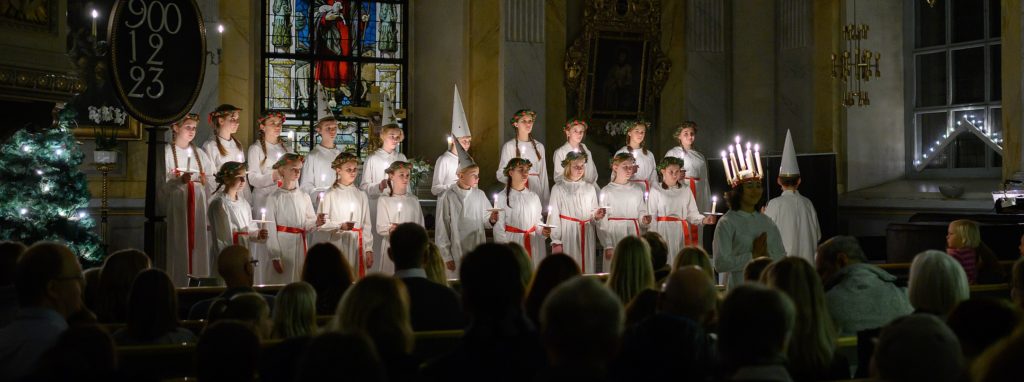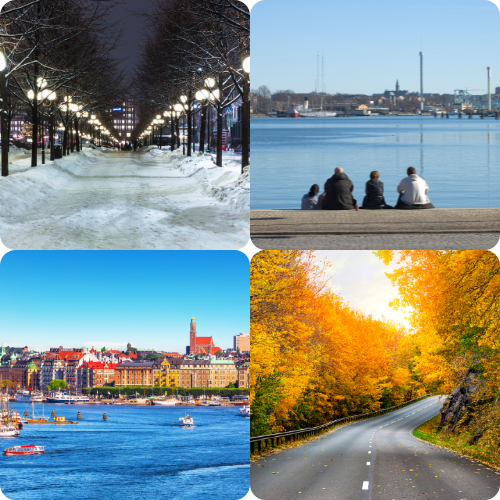Who was Alfred Nobel
Alfred Nobel was born in Stockholm on October 21, 1833. He was among many other things the inventor of dynamite and the blasting cap, synthetic rubber and leather, and artificial silk. By the time of his death, December 10, 1896, he had 355 patents in his name and was quite a wealthy man.
In his will it said that his fortune was to be used for prizes in;
Physics
Chemistry
Physiology or medicine
Litterature
And peace
The executor of the will formed the Nobel Foundation, an organization to take care of the financial assets and to coordinate the work of the prize-awarding institutions.
In 1968, Sveriges Riksbank, Sweden’s Central Bank, established The Sveriges Riksbank’s Prize in Economic Science in Memory of Alfred Nobel.
Between 1901 – 2021 the Nobel Prize and the Prize in economics has been awarded 609 times to a total of 947 laureates and 28 organizations.
During the years there has been a total of 49 prizes that weren’t awarded, mostly during world wars I and II.
The statutes of The Nobel Foundation says;
“If none of the works under consideration is found to be of the importance indicated in the first paragraph, the prize money should be reserved until the following year.
If, even then, the prize cannot be awarded the amount shall be added to the Foundation’s restricted funds.”
Two laureates have declined the prize;
Jean-Paul Sartre Litterature 1964
Le Duc Tho Peace 1973
The Nobel Prize Award ceremonies take place in Stockholm, Sweden on December 10th, and for the peace prize in Oslo, Norway the same day.
In Stockholm, laureates receive the Nobel Prize medal and diploma from King Carl XVI Gustaf of Sweden.
In Oslo, laureates receive the Nobel Peace Prize from the Chairman of the Norwegian Nobel Committee in the presence of King Harald V of Norway.
The laureates receive
- A Nobel Prize Diploma, each one uniquely handmade work of art
- A Noble Prize medal, handmade of 18 carat recycled gold
- A document confirming the Nobel Prize amount.
For 2021 the Prize amount is 10 million Swedish Crowns which is just under 1,100,000 US dollars.
Unfortunately, the pandemic has stopped the Nobel Prize ceremony in 2020 and 2021. All laureates will receive their prizes in their home countries.
So now let’s find out who Sankta Lucia (Saint Lucy) was
Every year, on December 13th, all of Sweden celebrates the feast of Sankta Lucia (Saint Lucy). According to 14th-century folklore, this was a dangerous night when many people believed that supernatural beings roamed the land. The Julian calendar was in use at the time, so this night coincided with the winter solstice, the darkest day of the year. This led many people to stay awake throughout the night to protect themselves from evil spirits.
It was only later that the feast day was named after Saint Lucia, a martyr and saint in the Roman Catholic and Orthodox churches.
St Lucia was a young Christian girl who was martyred, killed for her faith, in 304. The most common story told about St Lucia is that she would secretly bring food to the persecuted Christians in Rome, who lived in hiding in the catacombs under the city. She would wear candles on her head so she had both her hands-free to carry things. Lucy means ‘light’ so this is a very appropriate name.
However, Sweden’s Lucia celebration is a combination of honoring the saint, and the old pagan traditions, symbolizing light in the darkness.
Lucia made her first recorded appearance in a Swedish rural home in 1764, but the custom really established itself in the 1900s.
Leading the procession (luciatag), Lucia is trailed by handmaidens (‘tärnor’), star boys (‘stjärngossar’), and gingerbread men (‘pepparkaksgubbar’), and in many schools, the procession even contains Christmas elves (‘tomtenissar’).
The procession is led by Lucia, dressed in a white dress with a red sash around her waist and a crown of candles on her head. Depending on the age of Lucia the candles can be real or battery-driven. The crown is made of Lingonberry branches which are evergreen and symbolize new life in winter.
The handmaidens typically wear glitter or a wreath (without candles) in their hair and glitter or a decorative red ribbon around the waist. They are also wearing long white dresses.
Star boys wear all-white – just like Lucia and the handmaidens – with cone-like hats and star-adorned sticks. The lantern-carrying gingerbread men sport full gingerbread costumes, replete with white icing.
As well as being the bearer of light, Lucia’s offering of treats is just as key. The eats are gingerbread biscuits and an S-shaped saffron bun called a “Lussekatt” – a treat almost as classic as the cinnamon bun. To drink, you’ll sip little cups of “glögg” (mulled wine), served with almonds and raisins. Coffee was served traditionally and it’s still an option.

These tuneful “Luciatåg” processions – led by Lucia herself – play out on national TV and in kindergartens, schools, care homes, churches, and offices across the country. Waiting in anticipation, the audience’s first sign that Lucia and her posse are nearing is a mellow chorus approaching from the distance, followed by soft light cutting through the pre-dawn darkness.
Almost every Swede knows the Sankta Lucia song by heart, but that is just the beginning of several traditional songs sung by Lucia and her maids, star boys, gingerbread men, and when smaller kids are a part of the procession Christmas elves.
Many communities and cities have their own Lucia chosen, but there is also a national Lucia pageant, and a Swedish national Lucia and this is where the connection between the Nobel Prize Laureates and Lucia can be found.
As I mentioned earlier, the Nobel Prize festivities take place on December 10, and many of the laureates are spending the whole week in Sweden, lecturing and enjoying the city. For those who are still there on December 13th, a surprise awaits them, with the exception of the last two years when the festivities have been canceled.
Sweden’s national Lucia and her attendants surprise the Nobel Prize laureates who have stayed a bit longer at the Grand Hotel in Stockholm; Laureates are woken up in their hotel beds by girls dressed in white carrying candles, celebrating the feast of St Lucia in the early morning of Dec. 13.
If there is one thing I really miss from Sweden, especially as a teacher, is the celebration of Lucia. I have had the pleasure of going to the Old Swedes Church in Philadelphia a couple of times to see their Lucia and brought my American family with me. But now I am too far away from that so I have to enjoy Lucia on the internet.
Now there is only one episode left of this first season of A Swedish Fika, and if you have enjoyed the podcast You would make my Christmas by leaving a review on the platform you are listening on.
So let’s end with Merry Christmas and a happy new year or as we say in Sweden
God Jul och gott nytt ar




